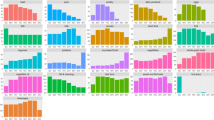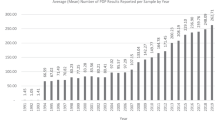Abstract
Characterizing food consumption patterns among children is critical to dietary pesticide exposure assessment. We have used public release data from the US National Health and Nutrition Examination Survey (NHANES) and the longitudinal Children's Pesticide Exposure Study (CPES) to illustrate the magnitude of potential error introduced by using national-scale, cross-sectional data to estimate the consumption frequencies for smaller cohorts. We focused on foods commonly consumed by children in the target CPES age and income group (3–11 years; annual household income >$75,000) and foods likely to contain organophosphorus or pyrethroid pesticide residues. We defined “percent eaters” as the percentage of study participants who reported eating a particular food in a 24-h period. We computed the weighted percent eaters and 95% confidence limits (CL) for the target age/income group using the NHANES 24-h dietary recall data and compared these with the CPES percent eaters by sampling day and season. For certain foods, particularly the seasonally available produce (for example, apples, peaches/nectarines, melon, grapes, pears, strawberries), soy milk, and peanut butter, the CPES percent eaters fell outside the NHANES 95% CLs on many sampling days. For other foods (for example, orange juice and cow's milk), differences were not readily apparent. Although the differences we observed for certain foods may be, in part, because of measurement error, they also likely reflect seasonal and geographic patterns among the CPES data that the public release NHANES data do not capture. Using NHANES data to estimate pesticide intakes from strawberries, for example, may underestimate the exposure of the CPES children, as significantly more CPES than NHANES children ate strawberries on many sampling days. For other sampling days or other foods, overestimation is also possible.
This is a preview of subscription content, access via your institution
Access options
Subscribe to this journal
Receive 6 print issues and online access
$259.00 per year
only $43.17 per issue
Buy this article
- Purchase on Springer Link
- Instant access to full article PDF
Prices may be subject to local taxes which are calculated during checkout







Similar content being viewed by others
Abbreviations
- AMPM:
-
automated multi-pass method
- CDC:
-
US Centers for Disease Control and Prevention
- CL:
-
confidence limit
- CPES:
-
Children's Pesticide Exposure Study
- CSFII:
-
Continuing Survey of Food Intakes by Individuals
- FQPA:
-
Food Quality Protection Act
- iDL:
-
Internet Data Logger
- NHANES:
-
US National Health and Nutrition Examination Survey
- NRC:
-
US National Research Council
- PDP:
-
Pesticide Data Program
- PFU:
-
phone follow-up dietary interview (NHANES)
- QA:
-
quality assurance
- USDA:
-
US Department of Agriculture
References
Buck R.J., Ozkaynak H., Xue J., Zartarian V.G., and Hammerstrom K. Modeled estimates of chlorpyrifos exposure and dose for the Minnesota and Arizona NHEXAS populations. J Expo Anal Environ Epidemiol 2001: 11: 253–268.
CDC (US Centers for Disease Control and Prevention). MEC In-Person Dietary Interviewer Procedures Manual. Department of Health and Human Services (DHHS), CDC, Hyattsville, MD, 2002.
CDC. Interviewer Procedures Manual. DHHS, CDC, Hyattsville, MD, 2004a.
CDC. MEC Phone Follow-Up Dietary Interviewer Procedures Manual. DHHS, CDC, Hyattsville, MD, 2004b.
CDC. NHANES 2001–2002. DHHS, CDC, Hyattsville, MD, 2007.
CDC. NHANES 2003–2004. DHHS, CDC, Hyattsville, MD, 2008.
Clayton A.C., Pellizzari E.D., Whitmore R.W., Quackenboss J.J., Adgate J., and Sefton K. Distributions, associations, and partial aggregate exposure of pesticides and polynuclear aromatic hydrocarbons in the Minnesota Children's Pesticide Exposure Study (MNCPES). J Expo Anal Environ Epidemiol 2003: 13: 100–111.
Curl C.L., Fenske R.A., and Elgethun K. Organophosphorus pesticide exposure of urban and suburban preschool children with organic and conventional diets. Environ Health Perspect 2003: 111: 377–382.
Dodd K.W., Guenther P.M., Freedman L.S., Subar A.F., Kipnis V., Midthune D., Tooze J.A., and Krebs-Smith S.M. Statistical methods for estimating usual intake of nutrients and foods: a review of the theory. J Am Diet Assoc 2006: 106: 1640–1650.
Fenske R.A., Kedan G., Lu C., Fisker-Andersen J.A., and Curl C.L. Assessment of organophosphorous pesticide exposures in the diets of preschool children in Washington State. J Expo Anal Environ Epidemiol 2002: 12: 21–28.
Food Quality Protection Act of 1996. Public Law 104-170, United States, 1996.
Givens M.L., Lu C., Bartell S.M., and Pearson M.A. Estimating dietary consumption patterns among children: a comparison between cross-sectional and longitudinal study designs. Environ Res 2007: 103: 325–330.
Gregory J. National Diet And Nutrition Survey: Young People Aged 4–18 Years, Volume 1: Report of the Diet and Nutrition Survey H.M. Stationery Office, London, 2000.
Harris C.A., and Gaston C.P. Effects of refining predicted chronic dietary intakes of pesticide residues: a case study using glyphosate. Food Addit Contam 2004: 21: 857–864.
Kranz S., Findeis J.L., and Shrestha S.S. Use of the Revised Children's Diet Quality Index to assess preschooler's diet quality, its sociodemographic predictors, and its association with body weight status. J Pediatr (Rio J) 2008: 84: 26–34.
Lu C., Barr D.B., Pearson M.A., and Waller L.A. Dietary intake and its contribution to the longitudinal organophosphorus pesticide exposure in urban and suburban children. Environ Health Perspect 2008a: 116: 537–542.
Lu C., Barr D.B., Pearson M.A., and Waller L.A. The attribution of urban and suburban children's exposure to synthetic pyrethroid pesticides: a longitudinal assessment. J Exp Sci Environ Epidemiol 2008b: 19: 69–78.
Lu C., Pearson M., Renker S., Myerburg S., and Farino C. A novel system for collecting longitudinal self-reported dietary consumption information: the internet data logger (iDL). J Expo Sci Environ Epidemiol 2006a: 16: 427–433.
Lu C., Toepel K., Irish R., Fenske R.A., Barr D.B., and Bravo R. Organic diets significantly lower children's dietary exposure to organophosphorus pesticides. Environ Health Perspect 2006b: 114: 260–263.
Morgan M.K., Sheldon L.S., Croghan C.W., Jones P.A., Robertson G.L., Chuang J.C., Wilson N.K., and Lyu C.W. Exposures of preschool children to chlorpyrifos and its degradation product 3,5,6-trichloro-2-pyridinol in their everyday environments. J Expo Anal Environ Epidemiol 2005: 15: 297–309.
NRC (National Research Council). Pesticides In The Diets Of Infants And Children. National Academy Press, Washington, DC, 1993.
Ocké M.C., van Rossum C.T.M., Fransen H.P., Buurma E.J.M., de Boer E.J., Brants H.A.M., Niekerk E.M., van der Laan L.D., Drijvers J.J.M.M., and Ghameshlou Z. Dutch National Food Consumption Survey-Young Children 2005/2006. RIVM, Bilthoven, Netherlands, 2008.
Riederer A.M., Bartell S.M., Barr D.B., and Ryan P.B. Diet and non-diet predictors of urinary 3-phenoxybenzoic acid in NHANES 1999-2002. Environ Health Perspect 2008: 116: 1015–1022.
Shurdut B.A., Barraj L., and Francis M. Aggregate exposures under the Food Quality Protection Act: an approach using chlorpyrifos. Regul Toxicol Pharmacol 1998: 28: 165–177.
USDA (US Department of Agriculture). Pesticide Data Program — Annual Summary Calendar Year 2003. USDA, Agricultural Marketing Service, Beltsville, MD, 2005.
USDA. Pesticide Data Program — Annual Summary Calendar Year 2004. SDA, Agricultural Marketing Service, Beltsville, MD, 2006.
US EPA (US Environmental Protection Agency). Guidance For Submission Of Probabilistic Human Health Exposure Assessments To The Office Of Pesticide Programs. EPA, Washington, DC, US, 1998.
US EPA. A Model Comparison: Dietary And Aggregate Exposure In CALENDEX, CARES, AND LIFELINE. EPA, Washington, DC, US, 2004.
US EPA. Child-Specific Exposure Factors Handbook, EPA/600/R-06/096F EPA, Washington, DC, US, 2008.
Xie B., Gilliland F.D., Li Y.F., and Rockett H.R. Effects of ethnicity, family income, and education on dietary intake among adolescents. Prev Med 2003: 36: 30–40.
Acknowledgements
This publication was developed under the support of the Science to Achieve Results (STAR) research assistance program (No.R-832244 and 829364), awarded by the US Environmental Protection Agency (US EPA). We thank K. Toepel, R. Irish, and P. Sande at the University of Washington and L. Andres, K. Shamsuddin, C. Holbrook, D. Gregory, and M. Holubar at Emory University for their work in the Children Pesticide Exposure Study (CPES). The content of this publication has not been formally reviewed by the US EPA, and the views expressed in this document are solely the authors’. US EPA does not endorse any products or commercial services mentioned in this publication.
Author information
Authors and Affiliations
Corresponding author
Ethics declarations
Competing interests
The authors declare no conflict of interest.
Additional information
Supplementary Information accompanies the paper on the Journal of Exposure Science and Environmental Epidemiology website
Supplementary information
Appendix 1
Appendix 1
Rights and permissions
About this article
Cite this article
Riederer, A., Pearson, M. & Lu, C. Comparison of food consumption frequencies among NHANES and CPES children: Implications for dietary pesticide exposure and risk assessment. J Expo Sci Environ Epidemiol 20, 602–614 (2010). https://doi.org/10.1038/jes.2009.48
Received:
Accepted:
Published:
Issue Date:
DOI: https://doi.org/10.1038/jes.2009.48



